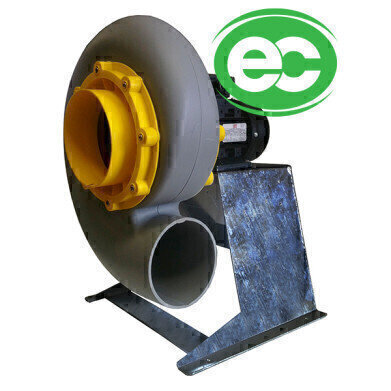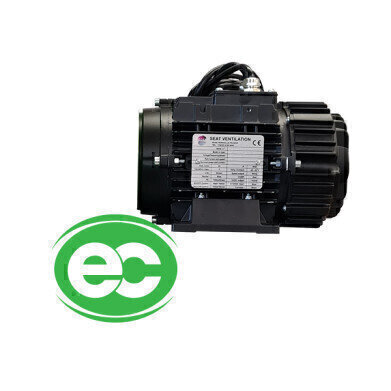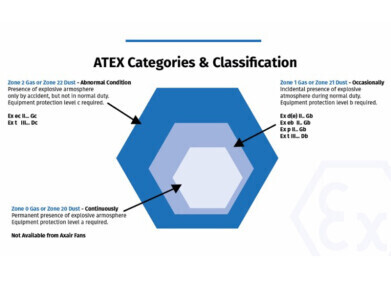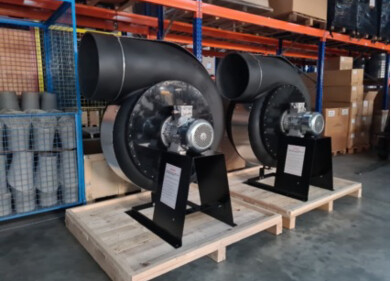Fume extractors
Electric Motor Efficiency within Fume Extraction Systems
Nov 17 2021
Faye Brophy, Head of Industrial at Axair Fans discusses the benefits of EC motors and the effects of electric motor efficiency regulations on energy consumption in fume extraction systems.
Converting electrical energy to mechanical energy is not always very efficient so the fact that one of the biggest energy consumers of any product is the electric motor isn’t all that surprising. The most common type of AC motor, the induction motor, has been around for over 100 years but with government regulations such as the electric motor efficiency regulations demanding International Efficiency of IE3 and above on motors 0.75kW and above* EC motors, or electronically commutated motors, are now the preferred choice in many fields and applications such as fan intensive fume extraction systems.
According to the International Energy Agency, electric motors account for approximately 45% of all global electricity usage and 75% of all industrial electricity usage. Efficiency is especially important in today’s climate, for reducing CO2 emissions but also for reducing the cost of a motor over its lifecycle.
Based on the new regulations that came into effect in July 2021, Premium efficiency motors (IE3) should be specified in all new installations, when purchasing spares, on major updates to existing processes and when replacing oversized or existing IE2 motors. When calculating the IE classification, energy efficiency of an electric motor is calculated as the ratio of the mechanical output power to the electrical input power. The Axair range of chemical resistant, polypropylene fume extraction fans are now available in IE5, known as the ultra-premium efficiency range according to the electric motor efficiency regulations. This places our industrial fan range far above the international efficiency requirements.
EC motors may seem complicated, but these motors make manufacturing processes more efficient, more reliable and allow them to perform better, with the biggest energy gains coming from the ability to speed control them.
Efficiency is the main reason for choosing EC motors over AC versions. With EC motors, the AC mains voltage is rectified in the commutation electronics reducing the losses internal to the motor. A downstream inverter provides the motor with the motor voltage depending on the position, like the principle of a frequency inverter.
Advantages:
- High Efficiency
- Low power consumption
- Integrated monitoring function
- (motor temperature, locked rotor and many more)
- Simple connection (Plug & Play)
- Expanded functionality (pressure control and many more)
- Compact design
- Speed Controllable
EC motors are ideal for integration into BMS systems such as Modbus, enabling maintenance engineers to monitor the status of individual fans and highlighting the need for retrofit or replacement. The EC range of chemical fans offers a technologically advanced and innovative product for local exhaust ventilation, school fume cupboards and other fume extraction systems where energy efficiency is a core consideration of the air movement system.
Digital Edition
Lab Asia Dec 2025
December 2025
Chromatography Articles- Cutting-edge sample preparation tools help laboratories to stay ahead of the curveMass Spectrometry & Spectroscopy Articles- Unlocking the complexity of metabolomics: Pushi...
View all digital editions
Events
Jan 21 2026 Tokyo, Japan
Jan 28 2026 Tokyo, Japan
Jan 29 2026 New Delhi, India
Feb 07 2026 Boston, MA, USA
Asia Pharma Expo/Asia Lab Expo
Feb 12 2026 Dhaka, Bangladesh





















